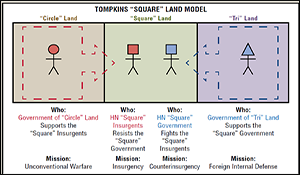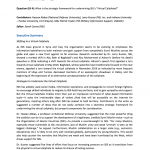Undermine ISIL’s “Virtual Caliphate”

Question (LR4): What is the strategic framework for undermining ISIL’s “Virtual Caliphate?”
Author | Editor: Canna, S. (NSI, Inc).
Iran’s Approach in Iraq
Shifting to a Virtual Caliphate
As ISIS loses ground in Syria and Iraq, the organization seems to be evolving to emphasize the information battlefront to both maintain and gain support from sympathetic Sunni Muslims across the globe and open a new front against its far enemies. Research conducted by Dr. Larry Kuznar, NSI, showed a marked shift in Abu Bakr al Baghdadi’s and Abu Mohammed al Adnani’s (before his death) speeches in 2016 indicating a shift towards the virtual caliphate. Adnani’s speech first signaled a turn towards virtual caliphate in May 2016. Baghdadi, whose speeches have traditionally focused on the near enemy, signaled a turn toward the virtual caliphate in November 2016 as indicated by more frequent mentions of Libya and Tunisia, decreased mentions of an apocalyptic showdown in Dabiq, and the beginning of the expression of an alternative conceptualization of the caliphate.
Strategies to Undermine the Virtual Caliphate
ISIS has adeptly used social media, information operations, and propaganda to recruit foreign fighters, to encourage skilled individuals to migrate to ISIS-held Iraq and Syria, and to gain sympathy and support. But the Virtual Caliphate implies more than just an impressive command of cyber-based information tools—it sows the irretrievable ideas of violent jihad that will be accessible on the internet for generations, inspiring others long after ISIS has ceased to hold territory. Contributors to this write up suggested a number of ideas that do not easily combine into a seamless strategic framework for undermining the virtual caliphate, but present components for consideration.
Dr. Hassan Abbas, a professor at National Defense University, suggested that the most powerful thing the coalition can do is to support the development of a legitimate, credible Sunni Muslim voice—such as the Organization of Islamic Countries (OIC)—to provide a counterweight to ISIS. “For many Muslims, especially those vulnerable to ISIL recruitment, lack of Muslim unity and weak ‘Ummah’ is seen as the biggest challenge,” he argued. Furthermore, Muslim collaboration on a larger scale (e.g., economic, educational, etc.) is likely to be very well received globally, particularly by young Muslims. This would also help counter the narrative that Muslims are weak and have been humiliated by the West, which drives support for ISIS.
Dr. Kuznar suggested five lines of effort that focus on increasing pressure on ISIS as it transitions from the physical to virtual caliphate to reduce its chance of lasting success.
- Continue to defeat ISIS militarily to discredit them and to force them to force a new narrative This report does not represent official USG policy or position. 1
- Continue to target top ISIS leadership, especially ideologues who are responsible for narrative generation
- Work with and enable credible alternative voices in Islamic world that can divert vulnerable recruits away from violent jihadist movements and inspiration
- Beware of alternate jihadists capturing ISIS’s market share of the virtual Caliphate as ISIS is further discredited
- Plan for cooperation with DHS and allies to mitigate persistent effects of lingering ISIS messaging in cyberspace
MAJ Patrick Taylor, 7th Military Information Support Battalion, USASOC, suggested that a new framework for undermining ISIS’s virtual caliphate is not needed. “[W]e do not require new doctrine or a new approach, we must simply apply current doctrine in creative ways as a framework for response. This is a return to first principles,” MAJ Taylor concluded. He argued that Psychological Operations is uniquely positioned to operate in the virtual battlespace using Cyber Enabled Special Warfare (CE-SW). He suggested thinking of the virtual domain as contested borderland filled with neighboring states, tribes, and communities with various competing interests. Successful operations require developing relationships with online digital natives to enable the USG and its allies to compete for functional capability in the information environment. As in other domains, It is essential to understand the viewpoints of these online tribes and communities in order to understand and combat the interests the drive mobilization.
Conclusion
ISIS’s shift from physical to virtual caliphate is extremely dangerous as it is a threat that will continue in perpetuity even after ISIS, the organization, is defeated. Violence seekers will be inspired by ISIS’s hateful rhetoric, other insurgent groups can learn from ISIS’s successes and failures, and the threat of homegrown violence may continue to rise. These conditions are unlikely to change, but we can perhaps limit the scope of the threat by considering some of the suggestions proposed here among others.
Contributing Authors
Abbas, H. (National Defense University), Kuznar, L. (NSI, Inc. and Indiana University – Purdue University, Fort Wayne), Taylor, P. (7th Military Information Support, USASOC)

Comments